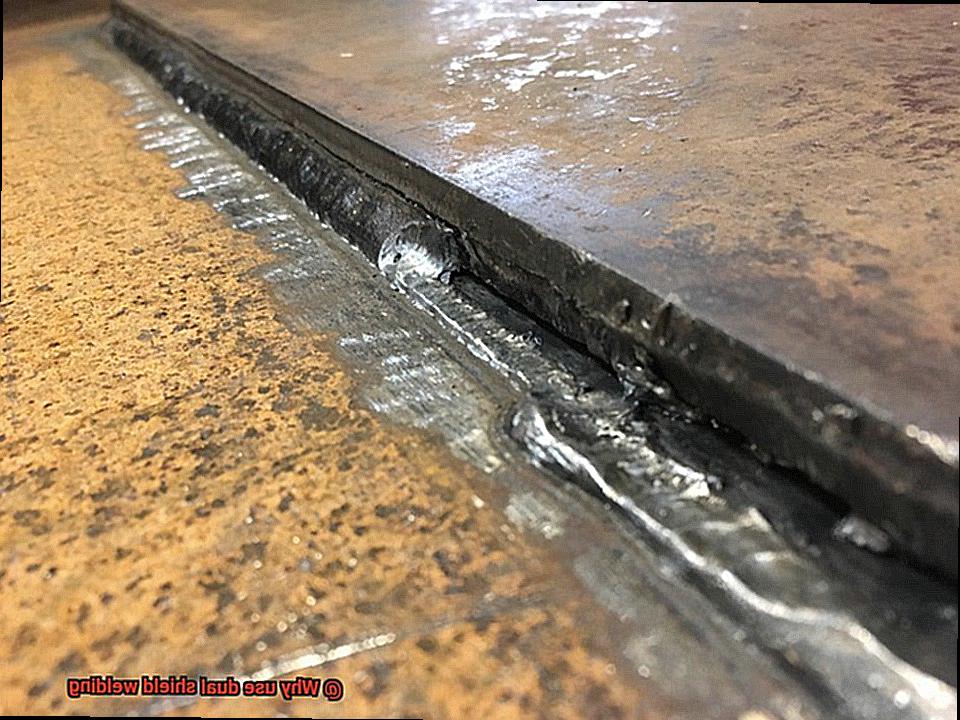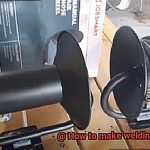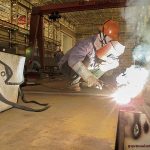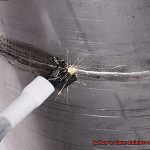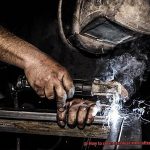Imagine being on a construction site, watching expert welders manipulate two wires with ease, creating strong and precise welds that seem almost magical.
What’s their secret? Dual shield welding.
This unique technique offers several advantages over other welding methods. Welding has been an essential part of industrial and manufacturing processes for decades.
However, choosing the perfect welding process for a particular job can be daunting. With so many techniques available, each with its benefits and limitations, it can be challenging to know which one to choose.
But dual shield welding stands out for its versatility and efficiency, making it an ideal choice for various applications. In this article, we’ll explore why you should consider using dual shield welding for your next project.
We’ll discuss the benefits of this welding process, such as high deposition rates, low spatter levels, excellent penetration, and more. Plus, we’ll examine the common materials that are best suited for dual shield welding.
So, let’s get started now.
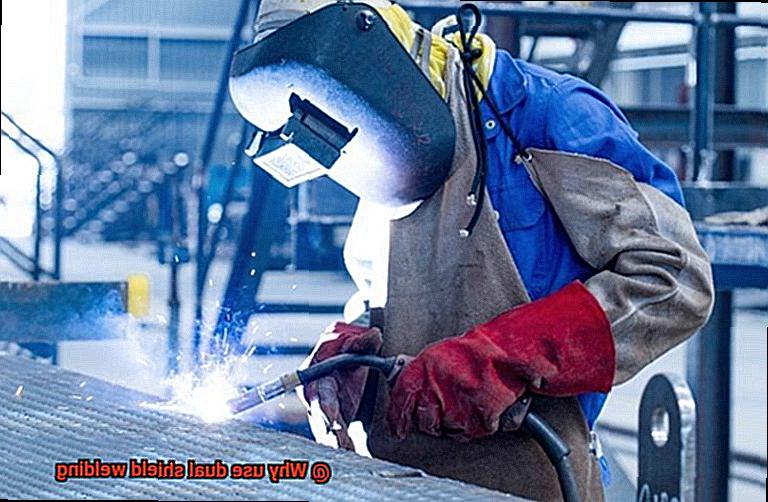
Advantages of Dual Shield Welding
Contents
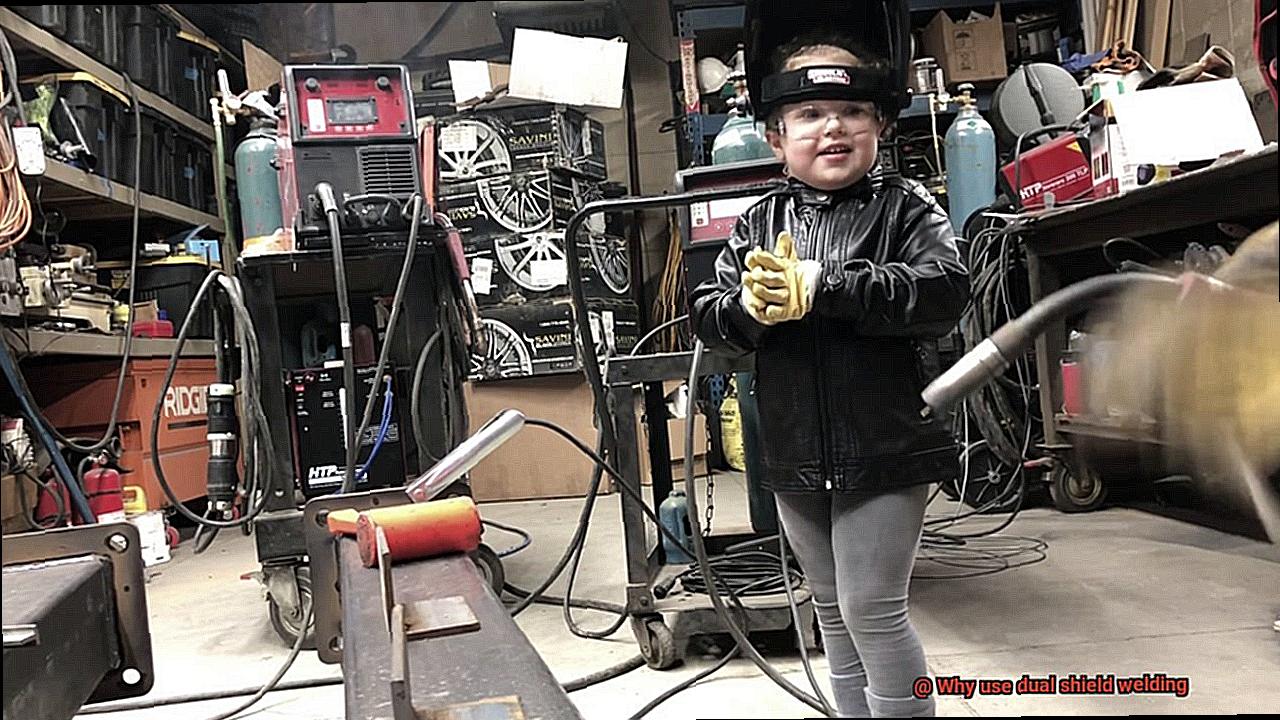
Your solution might be right here with dual shield welding.
Dual shield welding is a process that combines the use of shielding gas and flux-cored wire to join two metal pieces. This technique has several advantages over other welding processes, making it an attractive choice for heavy industries such as construction, oil and gas, and shipbuilding.
One of the most significant benefits of dual shield welding is its high deposition rate. The flux-filled wire used in this process allows welders to complete projects faster than other techniques, resulting in increased productivity.
Additionally, dual shield welding produces a stable arc with minimal spatter, which reduces clean-up time after welding. Versatility is another advantage of this technique.
Dual shield welding can be used on various materials such as carbon steel, stainless steel, and aluminum. This makes it an ideal option for welders who work with different metal types.
Moreover, dual shield welding produces high-quality welds with good fusion and minimal defects. This is particularly important in applications where durability and strength are essential, such as pipeline construction or structural steelwork.
Dual shield welding is also an excellent outdoor option because it provides better protection against wind and other environmental factors. Furthermore, this technique produces lower hydrogen levels than other types of welding, reducing the risk of hydrogen-induced cracking.
So, if you prioritize efficiency, productivity, and quality in your work, dual shield welding is an excellent technique to consider.
It offers high deposition rates, reduced spatter, increased penetration, versatility, improved weld quality, and lower hydrogen levels.
High Deposition Rates
You’re always looking for the best ways to boost productivity, efficiency, and quality. If that’s the case, then dual shield welding is the perfect solution for you.
What sets dual shield welding apart from other welding techniques is its ability to achieve high deposition rates. Deposition rate refers to the amount of metal deposited during the welding process.
With dual shield welding, you can create strong, flawless welds at lightning-fast speeds while minimizing spatter. So how does it work?
Dual shield welding uses a combination of flux-cored wire and shielding gas to join different metals. The flux in the wire helps protect the molten metal from atmospheric contamination, while the shielding gas stabilizes the arc and reduces spatter.
The combination of flux-cored wire and shielding gas allows for higher deposition rates than other types of welding techniques. This makes it ideal for large-scale projects like shipbuilding or pipeline construction.
The flux in the wire also helps increase the transfer of metal from the wire to the weld, resulting in faster weld speeds and even higher deposition rates. But that’s not all- dual shield welding also offers increased efficiency and reduced spatter.
This means less time spent cleaning up after your welding project and more time spent on creating new pieces. In conclusion, dual shield welding is an excellent choice for any welder who wants to take their skills to the next level.
Versatility with Materials
Today, we’re delving into the fascinating world of dual shield welding and its unparalleled versatility with materials.
No matter what kind of base metals you need to weld, dual shield welding has got you covered. This technique uses a flux core wire covered in a shielding gas, making it suitable for welding carbon steel, stainless steel, and low-alloy steels.
With dual shield welding, you can tackle any project from shipbuilding to pipeline construction without breaking a sweat. But that’s just the beginning.
The beauty of dual shield welding lies in its ability to adapt to various materials. By customizing the shielding gas used in the process, you can ensure optimal protection from oxidation and other contaminants.
This means that your weld will be stronger and more durable than ever before. And what about outdoor environments with wind and drafts?
Dual shield welding has got that covered too. Its unique flux core wire provides additional protection from the elements, preventing wind and other external factors from compromising your work.
In summary, dual shield welding is a reliable and efficient method for welding various materials in various settings. Its versatility is unmatched by any other form of welding, making it an excellent choice for industries that require flexibility and precision.
Quality of Welds
When it comes to achieving high-quality welds, dual shield welding is a technique that stands out from the rest. This method is like having a superhero on your side, capable of adapting to any situation and producing clean, precise, and durable welds with ease.
One of the significant advantages of dual shield welding is its ability to produce very clean welds with minimal spatter. The flux in the wire core shields the weld from atmospheric contamination, preventing impurities from entering the weld pool.
This shield-like effect keeps the precious metal clean and pure, free from harm. In addition to providing clean welds, dual shield welding offers greater control over weld penetration and bead shape.
Operators can adjust settings to achieve desired results, ensuring that welds meet or exceed industry standards. It’s like having a magic wand that allows you to shape and mold the metal into whatever form you desire.
Perhaps most importantly, dual shield welding produces excellent mechanical properties in the weld metal. The combination of flux and shielding gas results in a more stable arc, leading to fewer defects such as porosity, undercutting, and lack of fusion.
This means stronger and more durable welds capable of withstanding harsh environments and heavy loads. In conclusion, if you want high-quality welds that are clean, precise, and durable, look no further than dual shield welding.
Polarity for Dual Shield Welding
Polarity is like the power source for your welding project.
And for dual shield welding, direct current electrode negative (DCEN) polarity, also known as reverse polarity, is your superhero power. This is because the flux in the wire is designed to work with a negative charge.
When using DCEN polarity, electrons flow from the electrode to the workpiece, creating a focused and hotter arc. This results in better penetration and a narrower bead profile for precise and durable welds.
And guess what? You’ll also experience less spatter and improved overall weld quality.
But beware. Using direct current electrode positive (DCEP) polarity, also known as straight polarity, can cause issues such as poor penetration, excessive spatter, and a wider bead profile.
This could lead to an unstable arc and poor weld quality. So make sure you use the right polarity for the job.
It’s important to note that not all welding processes require DCEN polarity. For example, gas metal arc welding (GMAW) typically uses DCEP polarity.
That’s why it’s crucial to understand the specific requirements for each welding process to ensure proper polarity is used. In summary, DCEN polarity is your secret weapon for creating clean, precise and durable welds with ease when it comes to dual shield welding.
Difference between Dual Shield and Flux Core Wire
Let me break it down for you in an engaging and informative way.
Flux core wire welding involves melting a hollow wire filled with flux to create shielding gas that protects the weld. In contrast, Dual Shield welding uses a flux-cored wire with external shielding gas to shield the weld.
This makes Dual Shield welding more effective at preventing oxidation and producing high-quality welds. Moreover, Flux Core welding uses DCEN polarity, while Dual Shield welding typically uses DCEP polarity.
The polarity plays a crucial role in the formation of the weld and can impact penetration depth, bead appearance, and overall weld quality. If you require top-notch welds for your project, such as in structural steel fabrication or heavy equipment manufacturing, Dual Shield welding is undoubtedly the way to go.
It produces less spatter, has better control of the weld puddle, and can produce higher deposition rates.
vUztns6ed00″ >
Conclusion
To sum it up, dual shield welding is a highly adaptable and efficient method that outshines other welding processes in many ways.
Its ability to produce clean welds with minimal spatter, achieve high deposition rates, and work with various materials makes it a preferred choice for heavy industries such as construction, oil and gas, and shipbuilding. What’s more, the use of direct current electrode negative (DCEN) polarity in dual shield welding provides better penetration and narrower bead profiles for precise and long-lasting welds.
It also minimizes defects like porosity, undercutting, and lack of fusion. Dual shield welding is an excellent option for welders who handle different metal types.
Using flux-filled wire allows them to complete projects faster than other techniques, resulting in increased productivity. In summary, if you prioritize efficiency, productivity, and quality in your work, dual shield welding is an excellent technique to consider.
